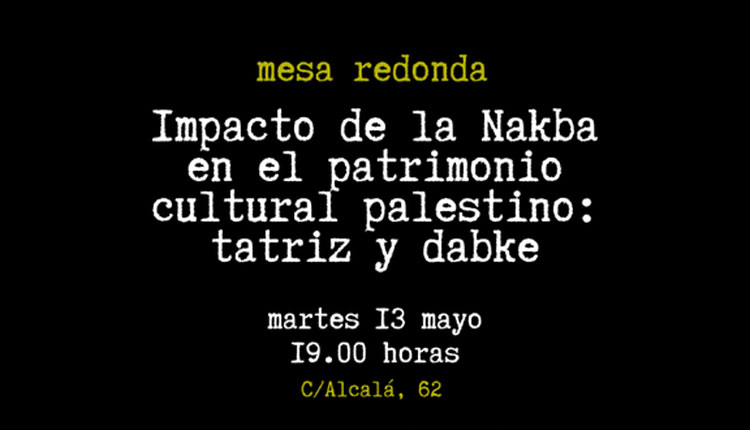In the framework of the commemoration of the 77th anniversary of the Nakba, Casa Árabe and the Spanish Agency for International Cooperation (AECID) organize tomorrow Tuesday at 7 pm in the diplomatic cultural center of Alcalá street, 62 the round table Impact of the Nakba on Palestinian cultural heritage: tatriz (embroidery) and dabke (dance). The event will be held in Spanish.
Free entry upon registration. Registration on this form. After the talk, the result of the collective work of the project “Threads of the Diaspora” will be presented.
Casa Árabe organizes this round table on the impact of the Nakba, both the 1948 and the current, on the Palestinian cultural heritage, with special emphasis on the practice and evolution of the tatriz (Palestinian embroidery) and dabke (traditional dance of the Middle East), as evidence of their intangible cultural heritage in addition to the identity symbols and forms of resistance of the Palestinian people, in Palestine and the diaspora.
Maysun Cheikh Ali Mediavilla, Hispano-Palestinian teacher and artist, collaborator of Casa Árabe for the projects on Palestinian embroidery in these last two years (Tatriz Vivo e Hilos de la diáspora); Laura Martínez del Pozo, Designer and director of the clothing brand PeSeta and developer with UNRWA of the Tatriz project, and Francisco Montero Lahsen, a Chilean-Palestinian researcher and dabke teacher, with whom Casa Árabe will offer in the coming months the Steps for Palestine workshops. Dabke from the Diaspora.
The round table will be followed by a meeting with participants and collaborators on the occasion of the opening of the exhibition of the collective work Threads of the Diaspora, the front of a Gaza dress, created from the pieces embroidered by the participants in last year’s tatriz workshops and the pieces sent by the public, connected as threads of the diaspora.
The opening will be attended by Miguel Moro Aguilar, director general of Casa Árabe; Eloisa Vaello Marco, deputy director of Cultural Cooperation and Action for Sustainable Development of the Directorate of Cultural and Scientific Relations of AECID, and Maysun Cheikh Ali Mediavilla, Hispano-Palestinian teacher and artist.
Nakba Day commemorates 15 May 1948, when the State of Israel declared its independence over almost 80 percent of historic Palestine. In the process, more than 800,000 Palestinians were evicted from their homes and land, while 531 Palestinian villages were wiped off the map. The trauma it caused is known as the Nakba, “catastrophe” in Arabic. But the Palestinians also refer to al-nakba al-mustamirra, the “continuing Nakba”, beyond a historical event, to a continuous process of dispossession and ethnic cleansing, as evidenced by the past nineteen months of military campaign and bombardments on Gaza, with more than 52,000 Palestinians killed and 120,000 directly injured by the attacks, and 2.3 million displaced people, in addition to new threats of expulsion against their population, with unprecedented levels of violence and impunity, They have already made it possible to talk about a new nakba in the 21st century.
